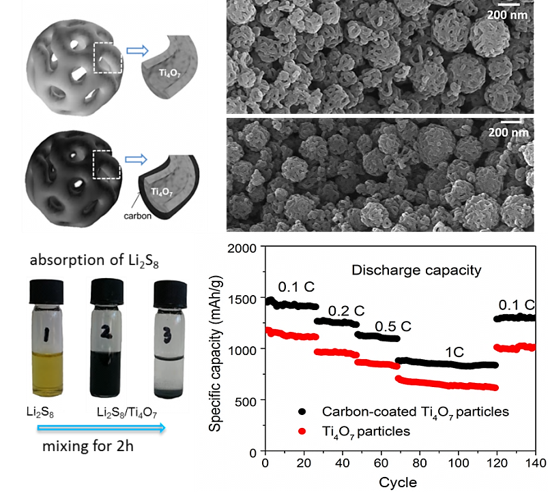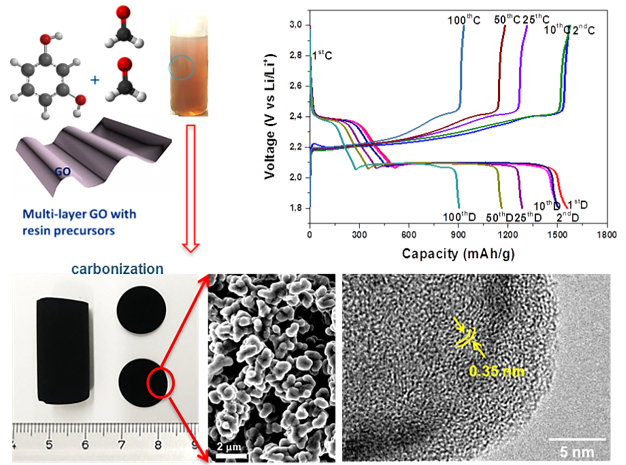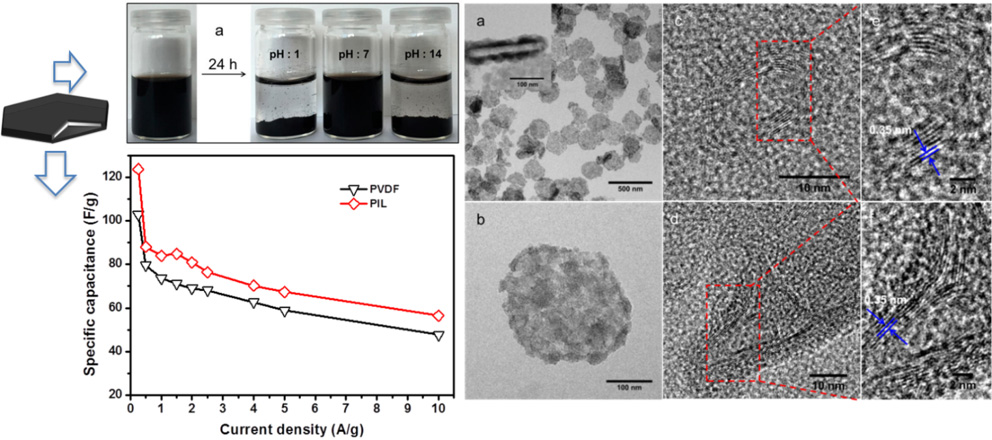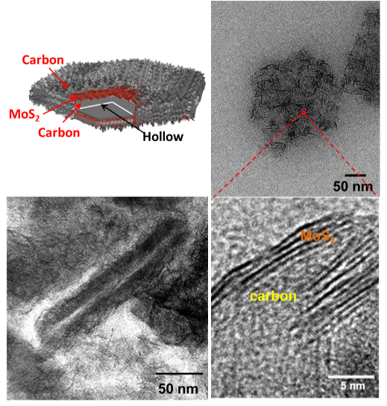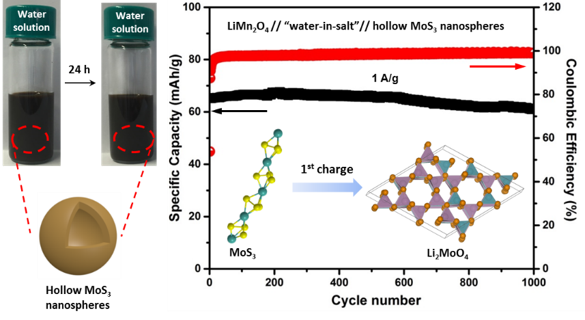Institute Electrochemical Energy Storage
Energy Storage Materials
1. Cathode materials for Li-S batteries
Metal oxide nanoparticles and free-standing porous carbon monolith can be synthesized through polymer assisted colloidal approaches. The well-defined nanostructures can be applied as cathode materials in Li-S batteries with excellent electrochemical performance. For example, Magnéli phase Ti4O7 particles with interconnected-pores structure can be synthesized by using porous PS-P2VP particles as template. They can provide mesopores for physical confinement and polar surface for chemically bonding with polysulfides to suppress their dissolution. Moreover, light-weight and mechanically stable carbon monoliths have been prepared from a hydrothermal method. This binder-free monolith have been used as model cathode material for a multidimensional operando analysis.
- S. Mei, C.J. Jafta, I. Lauermann, Q. Ran, M. Kärgell, M. Ballauff, Y. Lu, Advanced Functional Materials 2017, 27, 1701176 .
- Y. Yang, S. Risse, S. Mei, C.J. Jafta, Y. Lu, C. Stöcklein, N. Kardjilov, I. Manke, J. Gong, Z. Kochovski, M. Ballauff, Energy Storage Materials 2017, 9, 96-104.
2. Supercapacitors
Dispersible mesoporous nitrogen-doped hollow carbon nanoplates and hollow carbon-MoS2-carbon nanoplates have been synthesized using gibbsite nanoplates as templates. The resulted nanomaterials with 2D hollow nanoplate structures bear hexagonal morphology with high specific surface areas (460 m2 g-1 for hollow carbon nanoplates and 543 m2 g-1 for hollow carbon-MoS2-carbon nanoplates). They show excellent colloidal stability in aqueous media and are applied as electrode materials for symmetric supercapacitors. The materials exhibit high specific capacitance and excellent cycling stability in supercapacitors with 1 M Li2SO4 as the electrolyte.
1. J. Cao, C. J. Jafta, J. Gong, Q. Ran, X. Lin, R. Félix, R. G. Wilks, M. Bär, J. Yuan, M. Ballauff, Y. Lu, ACS Applied Materials & Interfaces 2016, 8, 29628-29636.
2. T. Quan, N. Goubard-Bretesché, E. Härk, Z. Kochovski, S. Mei, N. Pinna, M. Ballauff, Y. Lu, Chem. Eur. J. 2019, 25, 4745-4766.
3. Aqueous–based electrochemical energy storage systems
“Water-in-salt” electrolyte (a highly concentrated aqueous solution) has been used for Li-ion batteries and supercapacitors. In “water-in-salt” Li-ion batteries, hollow MoS3 nanospheres synthesized via a scalable room-temperature acid precipitation method have been applied as anode. The prepared MoS3 achieves a high specific capacity of 127 mAh g-1 at the current density of 0.1 A g-1 and good stability over 1000 cycles. During operation, MoS3 undergoes irreversible conversion to Li2MoO4 is then converted gradually to a more stable and reversible LixMoOy (2‹y‹4)) phase along cycling. In “water-in-salt” supercapacitors with hollow carbon nanoplates as electrode, the formation of solid electrolyte interphase has been observed by electrochemical impedance spectroscopy. The effect of temperature on the electrochemical performance of the WIS supercapacitors in the temperature range from 15 to 60 °C has been studied, which presents a gravimetric capacitance of 128 F g-1 at 55 °C compared to 87.5 F g-1 at 15 °C.
1. T. Quan, Y. L. Xu, M. Tovar, N. Goubard-Bretesché, Z. L. Li, Z. Kochovski, H. Kirmse, K. Skrodczky, S. L. Mei, H. T. Yu, D. Abou-Ras, M. Wagemaker, Y. Lu, Batteries & Supercaps 2020, 3(8): 747-756.
2. T. Quan, E. Härk, Y. L. Xu, I. Ahmet, C. Höhn, Y. Lu, ACS Applied Materials & Interfaces 2020, in revision.

